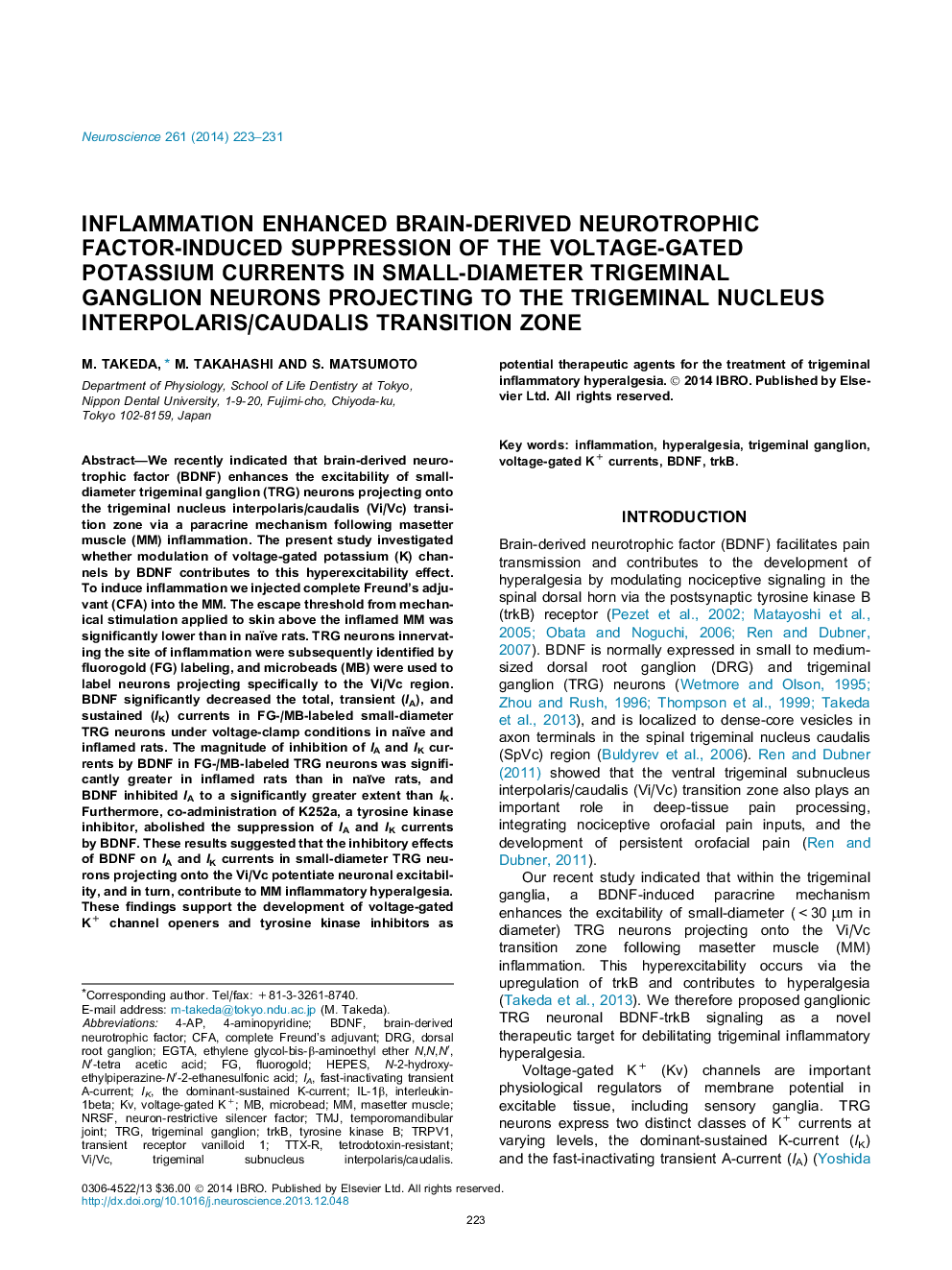| Article ID | Journal | Published Year | Pages | File Type |
|---|---|---|---|---|
| 6273935 | Neuroscience | 2014 | 9 Pages |
â¢TRG neurons innervate inflamed MM and projecting Vi/Vc region are labeled by FG and MB.â¢BDNF inhibits IA and IK currents in small-diameter FG/MB-labeled TRG neurons.â¢Inhibition magnitude of potassium currents by BDNF was greater in inflamed than in naïve rats.â¢BDNF inhibited IA to a significantly greater extent than IK and inhibition was blocked by k252a.â¢Potassium channel openers and tyrosine kinase inhibitors are therapeutic agents of hyperalgesia.
We recently indicated that brain-derived neurotrophic factor (BDNF) enhances the excitability of small-diameter trigeminal ganglion (TRG) neurons projecting onto the trigeminal nucleus interpolaris/caudalis (Vi/Vc) transition zone via a paracrine mechanism following masetter muscle (MM) inflammation. The present study investigated whether modulation of voltage-gated potassium (K) channels by BDNF contributes to this hyperexcitability effect. To induce inflammation we injected complete Freund's adjuvant (CFA) into the MM. The escape threshold from mechanical stimulation applied to skin above the inflamed MM was significantly lower than in naïve rats. TRG neurons innervating the site of inflammation were subsequently identified by fluorogold (FG) labeling, and microbeads (MB) were used to label neurons projecting specifically to the Vi/Vc region. BDNF significantly decreased the total, transient (IA), and sustained (IK) currents in FG-/MB-labeled small-diameter TRG neurons under voltage-clamp conditions in naïve and inflamed rats. The magnitude of inhibition of IA and IK currents by BDNF in FG-/MB-labeled TRG neurons was significantly greater in inflamed rats than in naïve rats, and BDNF inhibited IA to a significantly greater extent than IK. Furthermore, co-administration of K252a, a tyrosine kinase inhibitor, abolished the suppression of IA and IK currents by BDNF. These results suggested that the inhibitory effects of BDNF on IA and IK currents in small-diameter TRG neurons projecting onto the Vi/Vc potentiate neuronal excitability, and in turn, contribute to MM inflammatory hyperalgesia. These findings support the development of voltage-gated K+ channel openers and tyrosine kinase inhibitors as potential therapeutic agents for the treatment of trigeminal inflammatory hyperalgesia.
